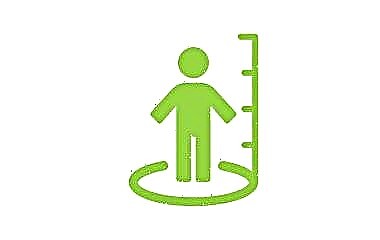Jaundice is common and usually harmless to newborn babies. The medical term for jaundice in newborns is neonatal jaundice. It occurs when babies have high bilirubin levels.
Bilirubin is a yellow pigment that is formed during normal destruction of red blood cells. Due to its increased content, the skin and sclera of the eyes turn yellow.
In older children and adults, the liver converts bilirubin, which then travels through the intestinal tract. However, the newborn's liver is not mature enough to handle the large amounts of bilirubin. And after the birth of a baby, a lot of it is formed due to the breakdown of a certain type of red blood cells that function in the fetus's body.
Usually, jaundice in newborns goes away without treatment as the liver matures, and when the baby begins to eat, it helps bilirubin to be released naturally through feces and urine.
Symptoms
Jaundice in newborns usually occurs three days after birth and resolves by two weeks of age.
 Premature babies, who are more prone to jaundice, may take 5 to 7 days, and this condition usually lasts about three weeks.
Premature babies, who are more prone to jaundice, may take 5 to 7 days, and this condition usually lasts about three weeks.
When a child has jaundice, the skin will appear yellowish. Yellowing of the skin usually begins on the head and face and then spreads to the chest and abdomen.
In some children, jaundice reaches the legs and arms. It also enlarges when you apply pressure to the skin with your finger.
Skin discoloration can be more difficult to detect if the baby has a darker skin tone. In these cases, yellowness is clearly visible in other places (whites of the eyes, oral mucosa, on the soles of the feet, on the palms).
Newborn with jaundice:
- breastfeeding poorly;
- screams too loud;
- sleepy all the time;
- it is written with dark urine, but it should be colorless;
- emptied by discolored feces, almost white (normally it should be yellow).
Jaundice in newborns usually resolves within 2 to 3 weeks.
Jaundice that persists for more than three weeks is a symptom of another underlying condition. In addition, high levels of bilirubin are a threat to the development of deafness, cerebral palsy, or other forms of brain damage in a child.
Why does jaundice develop?
Physiological jaundice of newborns occurs due to the fact that the child's body has a lot of consolidated bilirubin and the body does not have time to get rid of it. Bilirubin is formed when old red blood cells are destroyed. It leaves the child's body through stool and urine.
In infants, red blood cells break down very quickly, but the baby's liver is not sufficiently developed to get rid of all the released bilirubin. This leads to an excess of its level, which causes a yellow tint to the eyes and skin.
During pregnancy, the mother's body removes the fetal bilirubin through the placenta. After birth, the baby's body must get rid of bilirubin on its own.

Breastfeeding jaundice occurs in babies in the first week. This occurs in newborns who do not eat enough breast milk. In these babies, there is a decrease in the number of bowel movements, which leads to a delay in the elimination of excess bilirubin. The yellow pigment is deposited in the body.
As newborns continue to breastfeed, they consume more milk over time and the jaundice goes away.
Breast milk jaundice sometimes occurs in healthy babies a week after birth. This is manifested if there is a high amount of a substance in breast milk that slows down the excretion of bilirubin and, therefore, increases its amount in the blood.
Causes of pathological jaundice
Sometimes, jaundice in newborns is the result of another health problem. This is pathological jaundice.
- neonatal jaundice in children develops in cases of incompatibility of maternal and fetal blood groups. The mother's body will actually produce antibodies that attack the fetus's blood cells. This causes the breakdown of red blood cells and, consequently, an increased release of bilirubin from red cells;
- healthy red blood cells can be destroyed prematurely with pathological hemolysis;
- Polycythemia is a condition where a baby is born with an excess of red blood cells. More common in some twins and babies who are small for their gestational age;
- cephalohematoma, which can form during the birth process. This is a collection of blood just below the surface of the scalp. Since the body naturally breaks down this clotted blood, a large amount of bilirubin is released immediately. This sudden excess of bilirubin may be too much for the baby's liver to handle, and jaundice will develop;
- maternal diabetes contributes to the development of neonatal jaundice;
- Crigler-Nayar syndrome and Lucy-Driscoll syndrome are also conditions that cause jaundice. They are associated with disturbances in the metabolic processes of the liver;
- an inherited deficiency of an enzyme known as glucose-6-phosphate dehydrogenase also leads to jaundice;
- a liver problem in a child. The liver may not work well if the baby has hepatitis or cystic fibrosis, which affects this organ.
- sepsis - blood poisoning in a child.
- premature birth. A premature baby is more likely than others to develop jaundice due to severe liver underdevelopment.
Complications
Whether jaundice is dangerous depends on what is causing it, as well as on the level of bilirubin and how quickly the amount rises.
 Some disorders that cause jaundice are dangerous regardless of bilirubin levels. At the same time, its extremely high amount, regardless of the reason, is dangerous.
Some disorders that cause jaundice are dangerous regardless of bilirubin levels. At the same time, its extremely high amount, regardless of the reason, is dangerous.
The most serious complication of high bilirubin levels is kernicterus. This is a disorder in which bilirubin enters the brain and causes damage. Kernicterus only occurs when the amount of bilirubin is very high.
The risk of developing this disorder is higher for premature newborns, critically ill infants, or babies who are prescribed certain drugs. If left unchecked, kernicterus will cause lethargy, decreased appetite, loss of muscle tone, and seizures.
Later, children develop cerebral palsy, deafness, a constant wandering gaze or other signs of impaired brain function.
Currently, kernicterus rarely occurs due to careful screening for hyperbilirubinemia and timely treatment.
Diagnostics
While newborns are still in the hospital, doctors check them for jaundice. In most cases, it is visible due to the color of the sclera or a change in the skin tone of the child. But many specialists check the level of bilirubin in the newborn before discharge from the hospital.
And if a child has jaundice, doctors focus on determining if it is physiological. If the cause is another serious illness, it is diagnosed and treated.
Bilirubin levels are measured to confirm the diagnosis and severity of jaundice.
If the bilirubin level is high, the following blood tests are done:
 hematocrit (percentage of red blood cells in the blood);
hematocrit (percentage of red blood cells in the blood);- examination under a microscope of a blood smear;
- the number of newly formed erythrocytes - reticulocytes;
- Coombs' test (checks for the presence of certain antibodies attached to red blood cells);
- measurement of different types of bilirubin;
- blood group and Rh factor of the mother and newborn;
- albumin (a protein that binds bilirubin, preventing it from entering the brain).
Other tests may be done depending on test results, physical examination and the newborn's bilirubin level. This can include cultures of blood, urine, or cerebrospinal fluid samples to check for infection, or measuring the number of red blood cell enzymes to look for unusual causes of red blood cell breakdown.
Treatment
Physiological jaundice goes away on its own, because over time, the child's liver begins to mature and copes with its work.
Frequent feedings (8-12 times a day) will help the child's body to remove bilirubin.
Sometimes, if breast milk jaundice occurs, mothers are advised to interrupt breastfeeding for 1 or 2 days and express continuously during this break. They may resume breastfeeding when the newborn's bilirubin decreases. As a general rule, moms are then advised to breastfeed as usual.
More serious jaundice will require other treatments.
 Phototherapy Is a well-known and highly effective treatment that uses light to break down bilirubin in a child's body. During phototherapy, the baby lies in a special bed under the blue light spectrum, the baby is wearing only a diaper and safety glasses. The fiber optic blanket can also be placed under the baby.
Phototherapy Is a well-known and highly effective treatment that uses light to break down bilirubin in a child's body. During phototherapy, the baby lies in a special bed under the blue light spectrum, the baby is wearing only a diaper and safety glasses. The fiber optic blanket can also be placed under the baby.
Exchange transfusion. Used when the amount of bilirubin is too high and continues to rise despite intense phototherapy. A small amount of the infant's blood is gradually taken and replaced with the same amount of donor blood. The procedure usually takes 2 to 4 hours. This increases the number of red blood cells and decreases the level of bilirubin. Typically, the total amount of blood that is drawn and replaced is twice the volume of the newborn's blood.
Exchange transfusions need to be repeated if bilirubin continues to rise. The procedure has risks and complications - heart and breathing problems, blood clots and electrolyte imbalances in the blood.
Administration of intravenous immunoglobulin, also called IVIg. If the mother and newborn have different blood types, an immunoglobulin (blood protein) injection can be given. This will help your child cope with jaundice.
Prevention
There is no real way to prevent neonatal jaundice. During pregnancy, the blood group and Rh factor of the expectant mother are compulsorily determined. After birth, the baby's blood will be tested as needed to rule out blood group incompatibilities.
If your baby already has jaundice, there are ways to prevent complications:
- make sure your baby is eating enough breast milk. Feeding your baby 8-12 times a day for the first few days will ensure that your baby is not dehydrated. This helps the bilirubin to be cleared out of the body faster;
- if you cannot breastfeed and want to feed your baby with formula, for the first week, give him 30-60 ml of formula every 2 to 3 hours;
- watch your child carefully for the first five days of life. If you find symptoms of jaundice in an infant, see a specialist immediately.
When should you see a doctor?
- the child is not feeling well, he is not eating well and is not gaining enough weight;
- the baby develops jaundice in the first two days of life;
- jaundice becomes more noticeable after a week;
- the jaundice did not disappear after two weeks.

 hematocrit (percentage of red blood cells in the blood);
hematocrit (percentage of red blood cells in the blood);

